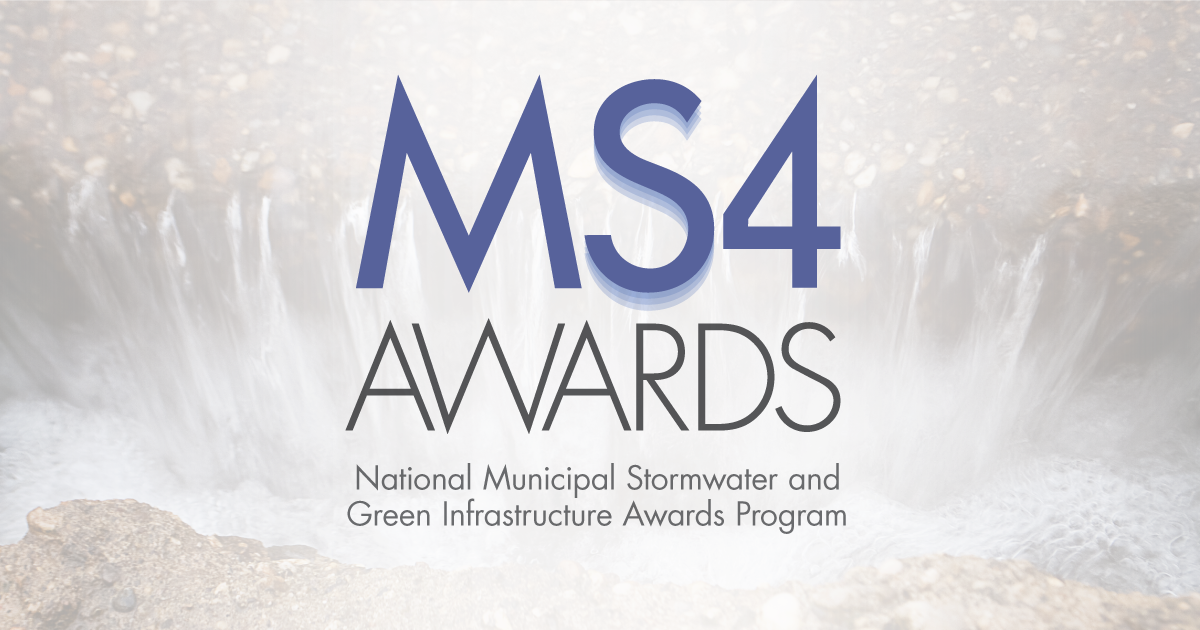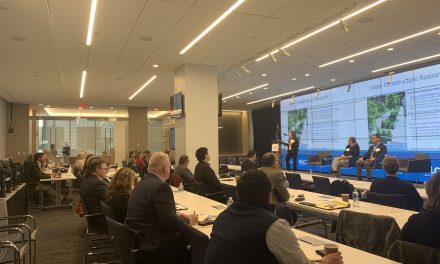Recognizing extraordinary efforts to protect local health and safety, detect and eliminate environmental hazards, and build support for stormwater management through extensive public outreach, the Water Environment Federation (WEF; Alexandria, Virginia) Stormwater Institute recently announced winners of its 2020 National Municipal Stormwater and Green Infrastructure Awards.
The awards program, developed in partnership with the U.S. Environmental Protection Agency (EPA) in 2015, honors high-performing regulated Municipal Separate Storm Sewer Systems (MS4s) that meet or exceed their regulatory obligations and provide models for other stormwater organizations to follow. Each year, the WEF Stormwater Institute invites all Phase I and Phase II MS4 permit-holders in good standing to apply for recognition. Nominees undergo an extensive review and selection process by a committee of stormwater experts, who each year select winners in three categories: Program Management; Innovation; and Overall Performance.
“This year’s National Municipal Stormwater and Green Infrastructure Award winners inspired the selection committee with their outside-the-box approaches to permitting, financing, outreach, innovation, and more,” said Fernando Pasquel, Chair of the Stormwater Institute Advisory Committee and a Senior Vice President at Arcadis (Arlington, Virginia). “Their ingenuity has driven better outcomes for public health and the environment in their communities and created models for stormwater organizations across the U.S. that demonstrate the true benefits of effective stormwater management”
Program Management Category
For each category, judges selected two winners: one Phase I MS4 permittee and one Phase II permittee. In the Program Management category, the Phase I winner was the Anne Arundel County (Maryland) Department of Public Works. The Phase II winner was the City of Alexandria, Virginia.
Delivering excellent stormwater management services while minimizing financial risk is one of Anne Arundel County Department of Public Works’ top priorities. In 2016, the department pioneered an innovative procurement mechanism that facilitates the third-party construction of stormwater infrastructure with little risk to the county, deferring all payment until projects are completed and inspected. In 2019, it became the first jurisdiction in Maryland to use the state’s new nutrient trading program to achieve MS4 permit compliance.
The agency also forged a partnership with the Anne Arundel County Watershed Stewards Academy to train conservation-minded citizens as “Master Watershed Stewards.” In order to graduate from the Master Watershed Steward program, students must plan and implement a restoration project in their community. According to nomination materials, 260 Master Watershed Stewards have been minted since 2009, installing more than 3,200 projects and planting more than 125,000 native plants.
The City of Alexandria, Virginia, has incorporated green-infrastructure concepts into requirements for new constructions at the institutional level. In 2018, the city passed a measure mandating at least 65% total phosphorus removal using surface-level green infrastructure for all development and redevelopment projects. The requirement also stipulates that designs for green-infrastructure measures must be non-proprietary in order to demonstrate attainable, nature-based possibilities for residents and visitors. In 2019, the city enhanced the policy to require 100% total phosphorus removal using green infrastructure on public-development projects.
Alexandria maintains a forward-looking environmental action plan for the next 20 years, which it helps achieve by sponsoring, organizing, and participating in an array of stream clean-up events surrounding the Potomac River. The city also frequently hosts Build Your Own Rain Barrel Workshops and maintains an expansive leaf-collection program, which combats sources of excess waterway nutrients and sediments by converting fallen leaves in autumn into mulch for public use the following spring.
Innovation Category
The Phase I and Phase II winners in the Innovation category were Metro Nashville (Tennessee) Water Services and the Metropolitan St. Louis (Missouri) Sewer District, respectively.
In addition to demonstrating creative approaches to public outreach and permitting, Metro Nashville Water Services manages a robust network of tools for detecting and eliminating illicit discharges that harm local water quality. The organization proactively inspects industrial and commercial properties during dry conditions in search of potential flood-points during major storms. Each winter, it also partners with the Metro Nashville Police Department to fly police helicopters equipped with infrared cameras over local streams in search of thermal plumes, which could indicate illicit discharges or active sewer overflows.
According to nomination materials, in recent years Metro Nashville Water Services has attempted to quantify the effectiveness of each of its programs. After developing a web-based tool that considers local land uses, soil conditions, and previous watershed sampling data, the agency estimated that its various programs to eliminate illicit discharges have reduced total suspended solids in the service area by approximately 8.6 million kg (19 million lbs.) in 2019.
The Metropolitan St. Louis Sewer District, along with its 60 other municipal MS4 co-permittees, demonstrate how maintaining strategic partnerships can help accomplish stormwater outcomes that would be difficult or impossible to do alone. The district, which serves a population of about 1.3 million people, works with such partners as Six Flags St. Louis amusement park, the St. Louis Aquarium, and St. Louis University to amplify its messaging against littering and pet waste. It also cooperates with Missouri Botanical Gardens to offer grants and technical assistance to landowners who want to construct green infrastructure on their property.
Under the district’s Project Clear program, it also offers publicly accessible resources that help land developers and engineers navigate the design, contracting, construction, and maintenance processes involved with building stormwater infrastructure. Alongside Missouri Botanical Gardens and the Missouri Water Environment Association, the district also offers regular training sessions on green infrastructure engineering and management.
Overall Performance Category
This year’s Overall Performance winners were City of Charlotte (North Carolina) Storm Water Services among Phase I permittees and the Capitol Region (St. Paul, Minnesota) Watershed District among Phase II permittees.
After successfully establishing a stormwater user fee based on impervious area, Charlotte Storm Water Services began a long-term campaign to update outdated stormwater infrastructure as well as develop new interventions. To date, the utility has accomplished 55 retrofit projects and deployed a far-reaching watershed monitoring network, consisting of automated samplers at 35 locations, macroinvertebrate and fish community assessments, and industrial and municipal facility discharge monitoring.
The agency is active in its community. Alongside the Charlotte Fire Department, Storm Water Services staff operate a 24-hour emergency response program. During emergency spills and pollution incidents, agency staff oversee response and cleanup to minimize impacts to surface waters. Since the program’s establishment, staff have responded to more than 1,300 incidents, according to nomination materials. As for public outreach, the utility takes a hands-on approach: one example is a unique pet-waste education program, in which staff place small flags alongside piles of pet waste in public areas with small signs that describe the environmental hazards of improper disposal.
Capitol Region Watershed District recently opened a new office facility on a former EPA Brownfields site in St. Paul, Minnesota. The new facility, which features such green-building elements as a 11,350-L (3,000-gal) rainwater reuse system that flushes toilets, washes equipment, and irrigates the grounds, serves as a centerpiece for the district’s extensive outreach and education efforts. Under a new outreach program launched last year, staff engage adults and children in green infrastructure and watershed conservation in partnership with local environmental groups. According to nomination materials, the program has thus far reached nearly 11,000 residents in addition to those who visit the district’s new office, which is open to the public as a community watershed learning center.
In addition to education, the district also puts theory into practice. About two decades ago, the agency created a grant program to subsidize decentralized stormwater infrastructure among residents, businesses, and schools. Nearly 1,750 interventions have been built as part of the program since its inception. The district also oversees a massive, regional rainwater reuse and infiltration system that each year manages approximately 80,000 m3 (2.5 million ft3) of runoff, as well as more than 500 rain gardens.






